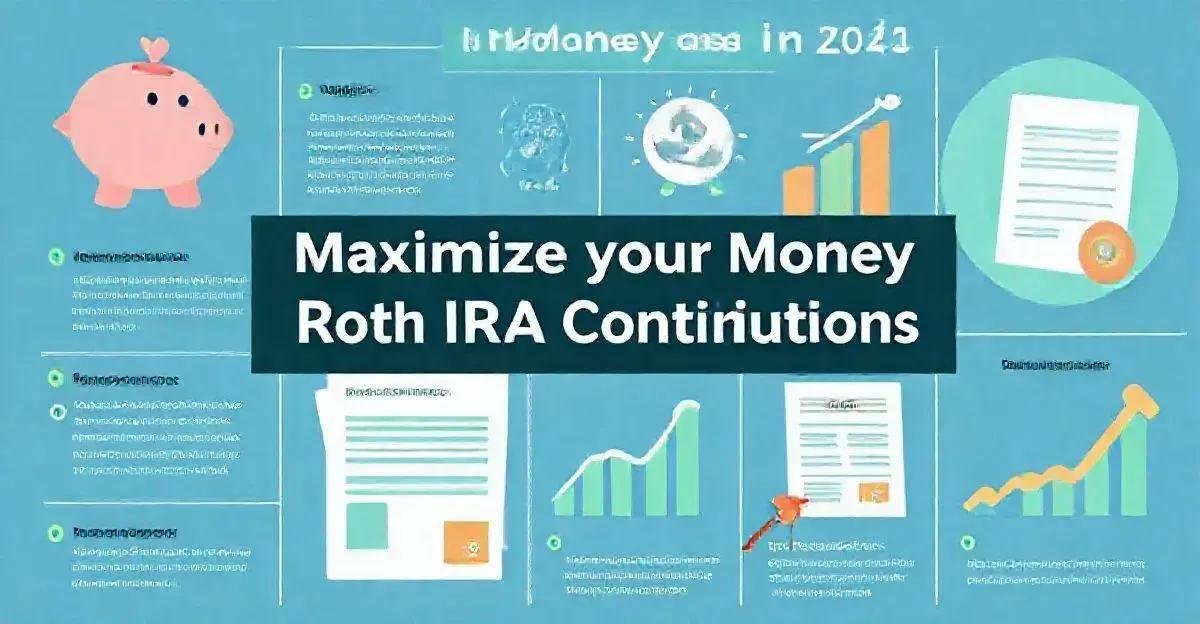Roth IRA contributions can be a powerful tool in your retirement savings arsenal, but it’s essential to understand the ins and outs to get the most out of this popular retirement account.
With the ability to contribute up to $6,000 per year, a Roth IRA can help you build a substantial nest egg for your golden years.
In this post, we’ll delve into the world of Roth IRA contributions, exploring the benefits, limitations, and strategies for maximizing your retirement savings.
Maximizing Retirement Savings with Roth IRA Contributions
Roth IRA contributions can be a powerful way to maximize your retirement savings, as they allow you to contribute a portion of your income on a tax-free basis. By contributing to a Roth IRA, you can take advantage of the potential for tax-free growth and withdrawals in retirement. Additionally, Roth IRAs offer more flexibility than traditional IRAs, as you have access to your contributions at any time without penalty or taxes. With a Roth IRA, you can potentially save thousands of dollars in taxes over the course of your lifetime, making it an attractive option for those looking to optimize their retirement savings.
Roth IRA contributions offer several benefits that make them an attractive option for retirement savers. One of the primary advantages is the ability to contribute on a tax-free basis, which can help reduce your taxable income and lower your tax bill. Additionally, Roth IRAs offer tax-free growth, meaning that your savings will grow without being subject to taxes. This can be particularly beneficial for individuals who expect to be in a higher tax bracket in retirement. Furthermore, Roth IRAs offer more flexibility than traditional IRAs, as you have access to your contributions at any time without penalty or taxes.
To be eligible to contribute to a Roth IRA, you must meet certain income limits and have earned income. In general, you can contribute to a Roth IRA if your income is below a certain level, which is adjusted annually for inflation. Additionally, you must have earned income from a job or self-employment to be eligible to contribute. The contribution limits for Roth IRAs are also subject to change, but for the 2022 tax year, the limit is $6,000. If you are 50 or older, you may be able to contribute an additional $1,000.
The tax implications of Roth IRA contributions are straightforward. Contributions are made with after-tax dollars, so you’ve already paid income tax on the money you contribute. The good news is that your contributions grow tax-free, and you won’t have to pay taxes on withdrawals in retirement. However, there are some rules to keep in mind. You can withdraw your contributions at any time without penalty or taxes, but if you withdraw earnings before age 59 1/2, you may be subject to a 10% penalty and taxes. Additionally, you’ll need to pay taxes on the earnings portion of your withdrawal.
To maximize your Roth IRA contributions, it’s essential to start early and consistently contribute over time. Consider setting up automatic transfers from your paycheck or bank account to make contributing easier and less prone to being neglected. You can also consider contributing more than the annual limit if you have the means, as this can help you build a larger nest egg more quickly. Finally, be sure to review and adjust your contributions periodically to ensure you’re on track to meet your retirement goals.
Roth IRA contributions can be a smart move for anyone looking to optimize their retirement savings. By contributing to a Roth IRA, you can potentially save thousands of dollars in taxes over the course of your lifetime, making it an attractive option for those looking to maximize their retirement savings. Additionally, Roth IRAs offer more flexibility than traditional IRAs, as you have access to your contributions at any time without penalty or taxes. With a Roth IRA, you can potentially build a substantial nest egg for your golden years, giving you the financial freedom to pursue your passions and interests.
Understanding the Benefits of Roth IRA Contributions

Roth IRA contributions offer several benefits that make them an attractive option for retirement savers. One of the primary advantages is the ability to contribute on a tax-free basis, which can help reduce your taxable income and lower your tax bill.
Additionally, Roth IRAs offer tax-free growth, meaning that your savings will grow without being subject to taxes. This can be particularly beneficial for individuals who expect to be in a higher tax bracket in retirement.
Furthermore, Roth IRAs offer more flexibility than traditional IRAs, as you have access to your contributions at any time without penalty or taxes.
Eligibility and Contribution Limits
To be eligible to contribute to a Roth IRA, you must meet certain income limits and have earned income. In general, you can contribute to a Roth IRA if your income is below a certain level, which is adjusted annually for inflation.
Additionally, you must have earned income from a job or self-employment to be eligible to contribute. The contribution limits for Roth IRAs are also subject to change, but for the 2022 tax year, the limit is $6,000. If you are 50 or older, you may be able to contribute an additional $1,000.
It’s essential to review the eligibility and contribution limits regularly to ensure you’re taking advantage of the maximum allowed contributions.
Tax Implications and Withdrawal Rules

The tax implications of Roth IRA contributions are straightforward. Contributions are made with after-tax dollars, so you’ve already paid income tax on the money you contribute. The good news is that your contributions grow tax-free, and you won’t have to pay taxes on withdrawals in retirement.
However, there are some rules to keep in mind. You can withdraw your contributions at any time without penalty or taxes, but if you withdraw earnings before age 59 1/2, you may be subject to a 10% penalty and taxes. Additionally, you’ll need to pay taxes on the earnings portion of your withdrawal.
It’s essential to understand these rules to avoid any potential penalties or taxes on your Roth IRA withdrawals.
Strategies for Maximizing Roth IRA Contributions
To maximize your Roth IRA contributions, consider the following strategies: start early and consistently contribute over time, take advantage of catch-up contributions if you’re 50 or older, and consider contributing more than the annual limit if you have the means.
Additionally, make sure to review and adjust your contributions periodically to ensure you’re on track to meet your retirement goals.
You can also consider working with a financial advisor to help you create a personalized retirement plan.
By following these strategies, you can potentially build a substantial nest egg for your golden years.
Conclusion: Why Roth IRA Contributions are a Smart Move

Roth IRA contributions are a smart move for anyone looking to optimize their retirement savings. By contributing to a Roth IRA, you can potentially save thousands of dollars in taxes over the course of your lifetime, making it an attractive option for those looking to maximize their retirement savings.
With a Roth IRA, you can build a substantial nest egg for your golden years, giving you the financial freedom to pursue your passions and interests.
Don’t overlook the potential of Roth IRA contributions to revolutionize your retirement savings.
Frequently Asked Questions about Roth IRA Contributions
What are the benefits of contributing to a Roth IRA?
Contributing to a Roth IRA can provide tax-free growth and withdrawals in retirement, allowing you to maintain your purchasing power and avoid taxes on your retirement income.
What are the eligibility requirements for contributing to a Roth IRA?
To be eligible to contribute to a Roth IRA, you must have earned income and meet certain income limits. You can contribute up to $6,000 in 2022, or $7,000 if you are 50 or older.
How do the tax implications of Roth IRA contributions work?
Roth IRA contributions are made with after-tax dollars, so you’ve already paid income tax on the money you contribute. The good news is that your contributions grow tax-free, and you won’t have to pay taxes on withdrawals in retirement.
Can I withdraw my Roth IRA contributions at any time?
Yes, you can withdraw your contributions at any time without penalty or taxes. However, if you withdraw earnings before age 59 1/2, you may be subject to a 10% penalty and taxes.
How can I maximize my Roth IRA contributions?
To maximize your Roth IRA contributions, consider starting early, contributing consistently, and taking advantage of catch-up contributions if you’re 50 or older. You can also work with a financial advisor to create a personalized retirement plan.
Why are Roth IRA contributions a smart move?
Roth IRA contributions are a smart move because they can provide tax-free growth and withdrawals in retirement, allowing you to maintain your purchasing power and avoid taxes on your retirement income. By contributing to a Roth IRA, you can build a substantial nest egg for your golden years.

